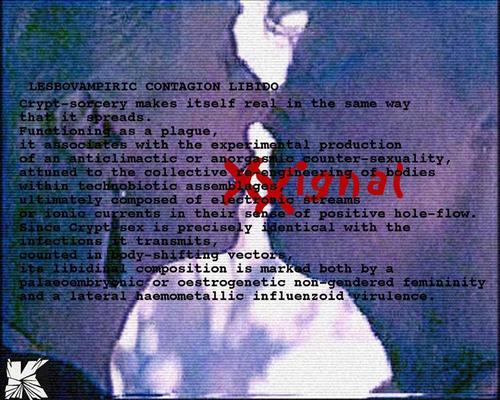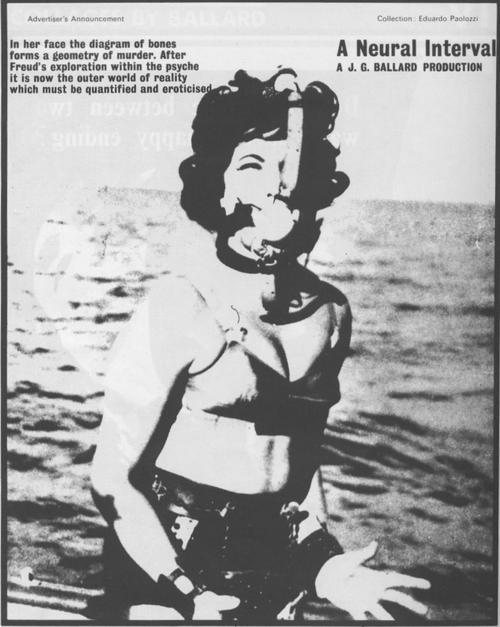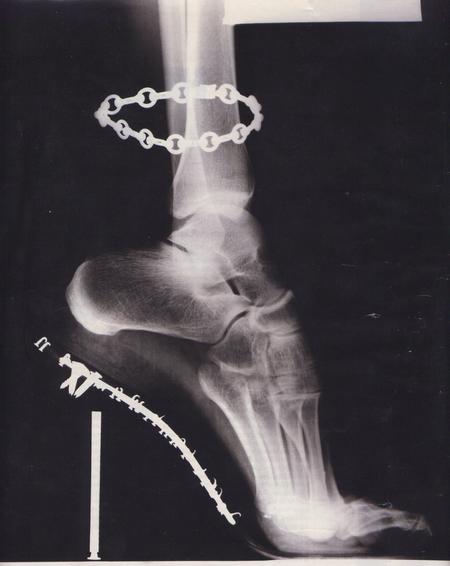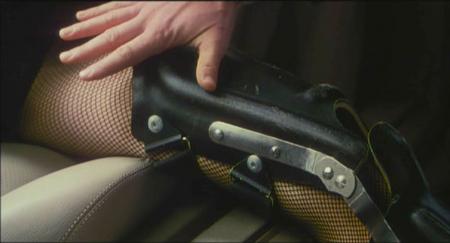June 01, 2005
FOR YOUR UNPLEASURE: THE HAUTEUR-COUTURE OF GOTH
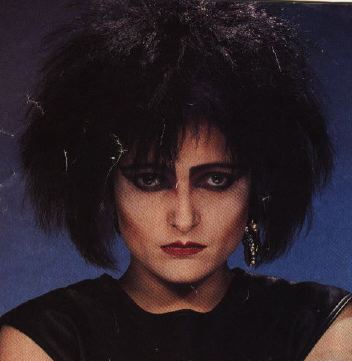
Ridiculed, forgotten, yet subterraneanly robust, Goth is the last remnants of glam in popular culture.
Goth is also the youth cult most associated with women and with fiction. This is hardly surprising. As I have pointed out before and is well known, the novel has its origins in 'gothic romances' which were predominantly consumed and produced by women, and the complicity of women with the Gothic has been a commonplace of literary criticism at least since Ellen Moers wrote her classic essay, 'Female Gothic', in 1977.
Why think about Goth now?
Partly it is because Goth's preposterous trash-aristocratic excess couldn't be more at odds with contemporary culture's hip hop-dominated sportswear brutilitarianism. At thes same time, though, Goth's shadow seems unusually visible in pop culture at the moment, what with references to it in both Coronation Street ('you're not even a proper Goth!') and Big Brother ('what is a Gothic? Can you make me into one?')
Partly it is because Rip It Up has revived fascination in all things post-punk, and Goth is the last surviving postpunk cult. These two facts have resulted in I.T. and me seceding from the oppressive masculinist cool of the club into the more congenial cold of Goth haunts.
Goth has its own version of more or less every other youth culture (hence there's techno Goth, Industrial Goth, Hippie Goth...) But let's leave aside the male abjects (The Cramps, The Birthday Party), the po-faced (the overwrought white dub of Bauhaus) and the po-mo (The Sisters of Mercy, who from the start traded in a self-conscious meta-Goth), and start with Siouxsie.
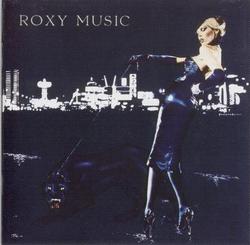 |  |
It is well-known that the Banshees were formed as a result of the future Siouxsie and Severin meeting at a Roxy show in 1974. (Which fact was repeated in this really rather bizarre piece on Roxy in last Friday's Guardian, which pursues the postmodern rock critical trend to equate 'importance' with 'influence' far past the point of self-parody, relegating actual discussion of Roxy's output to a paragraph or so before launching into a survey of groups they inspired). So, unlike the Birthday Party, who were famously disgusted when they arrived in London to find it dominated by New Romantic poseur-pop , the Banshees belonged to an art pop lineage which had a relationship to music which was neither ironically distant nor direct. For all their inventiveness, for all the damage they wreaked upon rock form, The Birthday Party remained Romantics, desperate to restore an expressive and expressionistic force to rock; a quest which led them back to the Satanic heartland of the blues. (If women want to understand what it is like to be the afflicted subject of male sexuality - I wouldn't necessarily advise it - there's no better fast-track to 'what's inside a boy' than the BP's 'Zoo Music Girl' or 'Release the Bats'). By contrast with this carnal heat, the early Banshees affected a deliberate - and deliberated - coldness and artificiality.
Siouxsie came from the art rock capital of England - that zone of South London in which both David Bowie (Beckenham) and Japan (Catford, Beckenham) grew up. Although Siouxsie was involved with punk from the very beginning, and although all of the major punk figures (even Sid Vicious) were inspired by Roxy, The Banshees were the first punk group to openly acknowledge a debt to glam. Glam has a special affinity with the English suburbs; its ostentatious anti-conventionality negatively inspired by the eccentric conformism of manicured lawns and quietly-tended psychosis Siouxsie sang of on 'Suburban Relapse'.
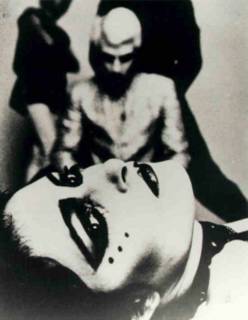
But glam had been the preserve of male desire: what would its drag look like when worn by a woman? This was a particularly fascinating inversion when we consider that Siouxsie's most significant resource was not the serial identity sexual ambivalence of Bowie but the staging of male desire in Roxy Music. She may have hung out with 'Bowie boys', but Siouxsie seemed to borrow much more from the lustrous PVC blackness of For Your Pleasure than from anything in the Thin White Duke's wardrobe. For Your Pleasure songs like 'Beauty Queen' and 'Editions of You' were self-diagnoses of a male malady, a specular desire that fixates on female objects that it knows can never satisfy it. Although she 'makes his starry eyes shiver', Ferry knows 'it never would work out'. This is the logic of Lacanian desire, which Alenka Zupancic explains as follows: 'The ... interval or gap introduced by desire is always the imaginary other, Lacan's petit objet a, whereas the Real (Other) of desire remains unattainable. The Real of desire is jouissance - that "inhuman partner" (as Lacan calls it) that desire aims at beyond its object, and that must remain inaccessible.' (For those, like cprobes, who are sceptical of what an ethics of the drive might look like, I recommend the outstanding essay from which this observation is taken, 'On Love as Comedy', which is an addendum to The Shortest Shadow).
Roxy's 'In Every Dreamhome a Heartache' is about an attempt, simultaneously disenchanted-cynical and desire-delirious, to resove this deadlock. It is as if Ferry has recognized, with Lacan, that phallic desire is fundamentally masturbatory. Since, that is to say, a fantasmatic screen prevents any sexual relation so that his desire is always for an 'inhuman partner', Ferry might as well have a partner that is literally inhuman: a blow-up doll. This scenario has many precursors: most famously perhaps Hoffman's short story 'The Sandman' (one of the main preoccupations of Freud's essay on 'The Uncanny' of course), but also Villier de L'isle Adam's lesser known but actually more chilling masterpiece of Decadent SF, 'The Future Eve' and its descendant, Ira Levin's Stepford Wives.
If the traditional problem for the male in pop culture has been dealing with a desire for the unattainable - for Lacan, remember, all desire is a desire for the unattainable - then the complementary difficulty for the female has been to come to terms with not being what the male wants. The Object knows that what she has does not correspond with what the subject lacks.
It is almost as if the female Goth response to this dilemma is to self-consciously assume the role of the 'cold, distanced, inhuman partner' (Zizek) of phallic desire. The glam male remained trapped in his perfect penthouse populated by dumb fantasmatic playdolls; the Goth female meanwhile roams through the roles of vamp and vampire, succubus, automaton. The glam male's pathologies are those of the subject; the Goth female's problematic is that of the object. Remember that the original sense of glamour - bewitchment - alludes to the power of the auto-objectified over the subject.
'If God is masculine, idols are always feminine', Baudrillard writes in Seduction (95), and Siouxsie differed from previous pop icons in that she was neither a male artist 'feminized' into iconhood by fan adoration, nor a female marionette manipulated by male svengalis, nor a female heroically struggling to assert a marginalized subjectivity. On the contrary, Siouxsie's perversity was to make an art of her own objectification. As Simon and Joy put it in The Sex Revolts Siouxsie's 'aspiration [was] towards a glacial exteriority of the objet d'art' evinced through 'a shunning of the moist, pulsing fecundity of organic life.' (344) This denial of interiority - unlike Lydia Lunch, Siouxsie is not interested in 'spilling her guts', in a confessional wallowing in the goo and viscera of a damaged interiority - corresponds to a staged refusal to either be 'a warm, compassionate, understanding fellow-creature' (Zizek). Like Grace Jones, another who made an art of her own objectification, Siouxsie didn't demand R.E.S.P.E.C.T. from her bachelor suitors (with the implied promise of a healthy relationship based on mutual regard) but subordination, supplication.
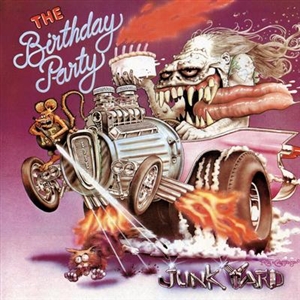
(The Goth male is all to ready to comply, although - as Nick Cave's compulsively repetitious career has graphicallly demonstrated - snivelling prostration may well only be the prelude to homicidal destruction. Grovelling in front of the Ice Queen - 'I kiss the hem of her skirt' - the Goth male is neither object nor subject but - famously - abject. The best image of this idiot lust is the slavering, pustulant monstrosity on the cover of the Birthday Party's Junkyard, and their 'Release the Bats' - a song the group came to despise because they thought it might result in their being pigeoholed as generic Goth - remains the most pulsingly compulsive dramatization of the goth abject surrendering himself to the Object of his quivering desire. Cave oscillates between worshipping his Lady's femmachinc hauteur - 'my baby is a cool machine', 'she moves to the pulse of the generator' - and pruriently drooling over the 'filth' of her flesh - 'she doesn't mind a bit of dirt'. This conforms almost perfectly with Lacan's description of the courtly Lady, whose cold abstraction is not defined by opposition with smelly physicality. Cave's abject is unable to give up on his desire, and the result is well-known: in order to continue to desire the woman, he must ensure that he cannot possess her, 'so that l'il girl will just have to go'. Only when he has made her as cold and unyielding as Ferry's 'perfect companion' or Poe's parade of beautiful cadavers, can his desire be extended 'to eternity', because then it is rendered permanently incapable of satisfaction.)
Instead of asserting an illusory 'authentic subjectivity' which supposedly lies beneath the costumes and the cosmetics, Siouxsie and Grace Jones reveled in becoming objects of the gaze. Both would no doubt have appreciated the derision Baudrillard poured upon the strategy of unmasking appearances in Seduction: 'There is no God behind the images and the very nothingness they conceal must remain a secret.' (94) Siouxsie and Jones' embracing of their objectality testifies to the fact that there is a scopic drive that cult studs whining about 'being reduced to an object' has always ignored: the exhibitionist drive be seen.
Simon is right that 'Painted Bird' (from the Banshees mistresspiece, A Kiss in the Dreamhouse) and the nearly contemporary 'Fireworks' were 'virtual manifestos for goth', but it's worth reflecting on how different these songs are in message and mood from the hackneyed image of the culture. Both 'Painted Bird' and 'Fireworks' (with its 'exultant image of self-beaufication as a glam gesture flashing amid the murk of mundanity') are not maudlin, matt black or self-absorbed, but celebrations of the colourful and the collective. 'WE are fireworks,' Siouxsie sings, 'burning shapes into the night', and you'd be hard pressed to find a song that crackles with so much enjoyment as this. The Banshees' take on Kozinski's novel Painted Bird is also about the triumph of collective joy over persecuted, isolated, individuated subjectivity. In Kozinski's novel, the hero paints one bird and when he throws it back to its flock they don't recognize it and therefore destroy it. But Siouxsie's Goths are not painted by another's hand; they are 'painted birds by their own design'. It is not the familiar tragic-heroic scenario in which an outsider, destined to lose, nevertheless makes a solitary stand against the conformist herd. The 'dowdy flock' are to be 'confounded', but by another flock, not by an individual, and the result is not frustration, but, again, jouissance - by the end of the song, 'there's no more sorrow'.
Think how different this is to the confederacy of isolation produced by Joy Division, whose functional clothes and 'non-image' implied the traditional male subjectivist privileging of the inside over the outside, depth over surface. Here was one type of 'black hole': the 'line of abolition' Deleuze-Guattari describe in 'Micropolitics and Segmentarity', the drive towards total self-destruction. The Banshees, on the other hand, were more like the 'cold stars' invoked by Neubauten: forbidding, remote, yet also the queens of a paradoxically egalitarian aristocracy in which membership was not guaranteed by birth or beauty but by self-decoration. Siouxsie's hyper-white panstick radiated the 'cold light' of stardom Baudrillard invokes in Seduction. Stars 'are dazzling in their nullity, and in their coldness - the coldness of makeup and ritual hieraticism (rituals are cool, according to McLuhan).' (96)
'The sterility of idols is well-known,' Baudrillard continues, 'they do not reproduce, but arise from the ashes, like the phoenix, or from the mirror, like the seductress.' The Gothic has always been about replication as opposed to reproduction. It's no coincidence that the female vampire was often associated with lesbianism (most gloriously in what is perhaps the definitive Goth film, The Hunger) because vampires and lesbians (like machines) present the horror (from the point of view of the phallic One) of a propagative power that has no use for the male seed. Conversely, 'female gothic' often pathologises pregancy, utilizing the language of horror to describe the gradual take-over of the body by an entity that is both appallingly familiar and impossibly alien. 'We Hunger' from the Banshees' Hyaena, with its 'horror of suckling' , fits into a lineage of female Horror which has seen 'pregnancy in terms of the appalling rapacity of the insect world' , as a 'parastic infestation' (Sex Revolts, 344).
The principal Goth vectors of propagation are, of course, signs and clothes (and - clothes as signs). The Siouxsie Look is, in effect, a replicatable cosmetic mask - a literal effacement of the organic expressivity of the face by a geometric pattern, all hard angles and harsh contrasts between white and black. White tribalism.
In Rip It Up, Simon says that the early Banshees were 'sexy in the way that Ballard's Crash was sexy', and Ballard's abstract fiction-theory is as palpable and vast a presence in the Banshees as it is in other post-punk. (It's telling that the turn from the angular dryness of the Banshees' early sound to the humid lushness of their later phase should have been legitimated by Severin's reading of The Unlimited Dream Company.) But what the Banshees drew (out) from Ballard was the equivalence of the semiotic, the pyschotic, the erotic and the savage. With psychoanalysis (and Ballard is nothing if not a committed reader of Freud), Ballard recognized that there is no 'biological' sexuality waiting beneath the 'alienated layers' of civilization. Ballard's compulsively repeated theme of reversion to savagery does not present a return to a non-symbolized bucolic Nature, but a fall back into an intensely semioticized and ritualized symbolic space. (It is only the postmoderns who believe in a pre-symbolic Nature). Eroticism is made possible - not merely mediated - by signs and technical apparatus, such that the body, signs and machines become interchangeable.
Baudrillard understood this very well, in his post-punk era essay on Crash:
'Each mark, each trace, each scar left on the body is like an artificial invagination, like the scarifications of savages [...]. Only the wounded body exists symbolically - for itself and for others - "sexual desire" is never anything but the possibility bodies have of combining and exchanging their signs. Now, the few natural orifices to which one normally attaches sex and sexual activities are nothing next to all the possible wounds, all the artificial orifices (but why "artificial"?), all the breaches through which the body is reversibilized and, like certain topological spaces, no longer knows either interior or interior [...] Sex [....] is largelhy overtaken by the fan of symbolic wounds, which are in some sense the anagrammatization of the whole length of the body - but now, precisely, it is no longer sex, but something else [...] The savages knew how to use the whole body to this end, in tatooing, torture, initiation - sexuality was only one of the possible metaphors of symbolic exchange, neither the most significant, nor the most prestigious, as it has become for us in its obsessional and realistic reference, thanks to its organic and functional character (including in orgasm).' (114-115)
As is well-known, female dis-ease in capitalism is often expressed not in an assertion of the 'natural' against the artificial, but in the anti-organic protest of eating disorders and self-cutting. It's hard not to see this - as I.T. following Zizek does - as part of the 'obsession' with 'realistic reference', an attempt to strip away all signs and rituals so as to reach the unadorned thing-in-itself. Goth is in many ways an attempt to make good this symbolic deficit in postmodern culture: dressing up as re-ritualization, a recovery of the surface of the body as the site for scarification and decoration (which is to say, a rejection of the idea that the body is merely the container or envelope for interiority).
Take Goth footwear. With their flagrant anti-organicic angularity, their disdain for the utilitarian criteria of comfort or functionality, Goth shoes and boots bend, bind, twist and extend the body. Clothing recovers its cybernetic and symbolic role as a hyperbolic supplement to the body, as what which destroys the illusion of organic unity and proportion.

LINXX
Iris Carver on cybergothic: The a-death phenomenon, Unscreened Matrix, The Unlife of the Earth.
Me on Gothic Materialism (see also my thesis obv). GM is probably the last thing I produced in the amphetamine-libidinal cyberpunk style. As is typical with that mode, there is a high degree of compression; ideas that could have been explored for (at least) a chapter are crashed through not so much like there's no tomorrow as in the cyberpunk conviction that tomorrow is already here and we have to catch up. (Much of the Ccru take on D/G was in effect a Goth remix of their corpus, editing out the hippy-drippy Bergsonian vitalism in favour of the Artaudian body without organs.)
Posted by mark at June 1, 2005 12:24 PM | TrackBack